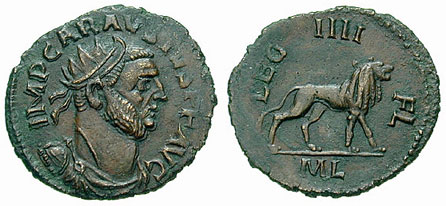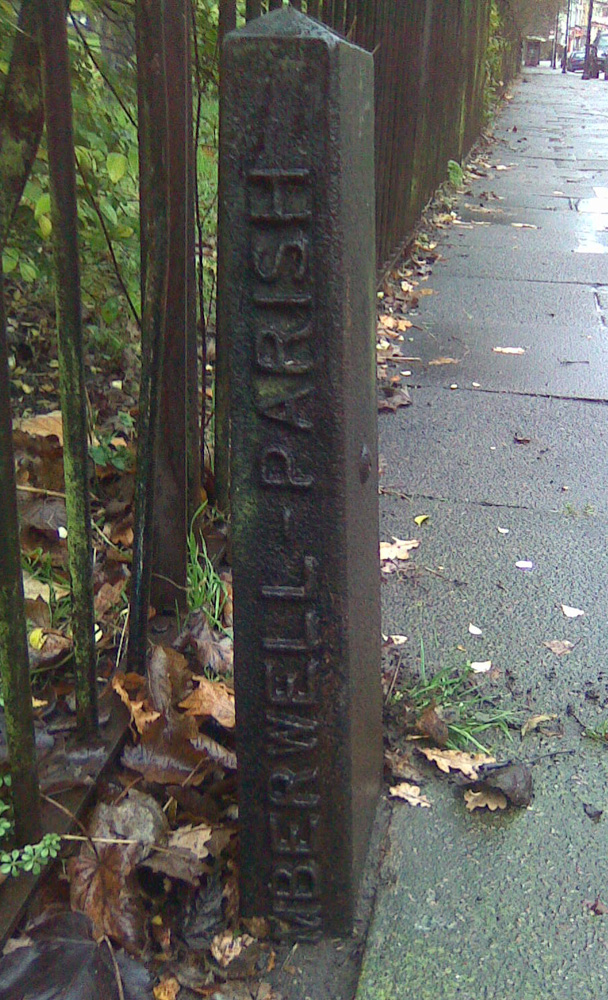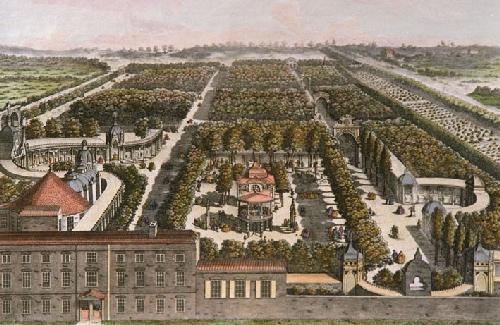|
History Of London
The history of London, the capital city of England and the United Kingdom, extends over 2000 years. In that time, it has become one of the world's most significant Economy of London, financial and Culture of London, cultural centres. It has withstood Great Plague of London, plague, devastating Great Fire of London, fire, English Civil War, civil war, The Blitz, aerial bombardment, List of terrorist incidents in London, terrorist attacks, and List of riots in London, riots. The City of London is the historic core of the Greater London Built-up Area, Greater London metropolis, and is today its primary financial district, though it represents only a small part of the wider metropolis. Foundations and prehistory Some recent discoveries indicate probable very early settlements near the Thames in the London area. At the Fulham Palace site in Fulham in modern West London, evidence of prehistoric activity dating from the late Mesolithic and early Neolithic age was uncovered by various a ... [...More Info...] [...Related Items...] OR: [Wikipedia] [Google] [Baidu] |
London
London is the Capital city, capital and List of urban areas in the United Kingdom, largest city of both England and the United Kingdom, with a population of in . London metropolitan area, Its wider metropolitan area is the largest in Western Europe, with a population of 14.9 million. London stands on the River Thames in southeast England, at the head of a tidal estuary down to the North Sea, and has been a major settlement for nearly 2,000 years. Its ancient core and financial centre, the City of London, was founded by the Roman Empire, Romans as Londinium and has retained its medieval boundaries. The City of Westminster, to the west of the City of London, has been the centuries-long host of Government of the United Kingdom, the national government and Parliament of the United Kingdom, parliament. London grew rapidly 19th-century London, in the 19th century, becoming the world's List of largest cities throughout history, largest city at the time. Since the 19th cen ... [...More Info...] [...Related Items...] OR: [Wikipedia] [Google] [Baidu] |
Fulham
Fulham () is an area of the London Borough of Hammersmith and Fulham in West London, England, southwest of Charing Cross. It lies in a loop on the north bank of the River Thames, bordering Hammersmith, Kensington and Chelsea, London, Chelsea, with which it shares the area known as West Brompton. Over the Thames, Fulham faces Wandsworth, Putney, the London Wetland Centre in Barnes, London, Barnes in the London Borough of Richmond upon Thames. First recorded by name in 691, it was an extensive Anglo-Saxon settlement of Britain, Anglo-Saxon estate, the Fulham Palace, Manor of Fulham, and then a parish. Its domain stretched from modern-day Chiswick in the west to Chelsea, London, Chelsea in the southeast; and from Harlesden in the northwest to Kensal Green in the northeast bordered by the littoral of Counter's Creek and the Manor of Kensington. It originally included today's Hammersmith. Between 1900 and 1965, it was demarcated as the Metropolitan Borough of Fulham, before its me ... [...More Info...] [...Related Items...] OR: [Wikipedia] [Google] [Baidu] |
Roman Empire
The Roman Empire ruled the Mediterranean and much of Europe, Western Asia and North Africa. The Roman people, Romans conquered most of this during the Roman Republic, Republic, and it was ruled by emperors following Octavian's assumption of effective sole rule in 27 BC. The Western Roman Empire, western empire collapsed in 476 AD, but the Byzantine Empire, eastern empire lasted until the fall of Constantinople in 1453. By 100 BC, the city of Rome had expanded its rule from the Italian peninsula to most of the Mediterranean Sea, Mediterranean and beyond. However, it was severely destabilised by List of Roman civil wars and revolts, civil wars and political conflicts, which culminated in the Wars of Augustus, victory of Octavian over Mark Antony and Cleopatra at the Battle of Actium in 31 BC, and the subsequent conquest of the Ptolemaic Kingdom in Egypt. In 27 BC, the Roman Senate granted Octavian overarching military power () and the new title of ''Augustus (title), Augustus'' ... [...More Info...] [...Related Items...] OR: [Wikipedia] [Google] [Baidu] |
Constantius I Capturing London After Defeating Allectus Beaurains Hoard
Constantius may refer to: __NOTOC__ Roman people * Constantius I "Chlorus" (–306), Western Roman emperor from 305 to 306 * Julius Constantius (died 337), consul in 335, son of Constantius I * Constantius Gallus (325–354), ''caesar'' from 351 to 354 and consul from 352 to 354, son of Julius Constantius * Constantius II (317–361), emperor from 337 to 361, grandon of Constantius I * Constantius III, Western Roman emperor in 421 * Constantius Ducas, Eastern/Byzantine co-emperor from 1060 to 1078 Religious figures * Saints Simplicius, Constantius and Victorinus (died c. 159), Christian martyrs * Saint Constantius of Perugia (died c. 170), one of the patron saints of Perugia, Italy * Saint Constantius (Theban Legion) (c. 3rd century), a member of the legendary Theban Legion * Constantius of Lyon (), cleric who wrote the ''Vita Germani'', a hagiography * Saint Constantius of Aquino, 6th century bishop of Aquino * Saint Constantius of Capri (died 7th or 8th century), Bishop of ... [...More Info...] [...Related Items...] OR: [Wikipedia] [Google] [Baidu] |
Antoninianus Carausius Leg4-RIC 0069v
The ''antoninianus'' or pre-reform radiate was a coin used during the Roman Empire thought to have been valued at 2 ''denarii''. It was initially silver, but was slowly debased to bronze with a minimal silver content. The coin was introduced by Caracalla in early 215 AD. It was silver, similar to the ''denarius'', except that it was slightly larger and featured the emperor wearing a radiate crown, indicating it was a double denomination. ''Antoniniani'' depicting women (usually the emperor's wife) featured the bust resting upon a crescent moon. Even at its introduction, the silver content of the ''antoninianus'' was only equal to 1.5 ''denarii''. This created inflation: people rapidly hoarded the ''denarii'' (Gresham's law), while both buyers and sellers recognized the new coin had a lower intrinsic value and elevated their prices to compensate. Silver bullion supplies began running short because the Roman Empire was no longer conquering new territory, the Iberia ... [...More Info...] [...Related Items...] OR: [Wikipedia] [Google] [Baidu] |
Prehistoric Britain
Several species of humans have intermittently occupied Great Britain for almost a million years. The earliest evidence of human occupation around 900,000 years ago is at Happisburgh on the Norfolk coast, with stone tools and footprints probably made by ''Homo antecessor''. The oldest human fossils, around 500,000 years old, are of ''Homo heidelbergensis'' at Boxgrove in Sussex. Until this time Britain had been permanently connected to the Continent by a chalk ridge between South East England and northern France called the Weald-Artois Anticline, but during the Anglian Glaciation around 425,000 years ago a megaflood broke through the ridge, and Britain became an island when sea levels rose during the following Hoxnian interglacial. Fossils of very early Neanderthals dating to around 400,000 years ago have been found at Swanscombe in Kent, and of classic Neanderthals about 225,000 years old at Pontnewydd in Wales. Britain was unoccupied by humans between 180,000 and 60,00 ... [...More Info...] [...Related Items...] OR: [Wikipedia] [Google] [Baidu] |
Spear
A spear is a polearm consisting of a shaft, usually of wood, with a pointed head. The head may be simply the sharpened end of the shaft itself, as is the case with Fire hardening, fire hardened spears, or it may be made of a more durable material fastened to the shaft, such as bone, flint, obsidian, copper, bronze, iron, or steel. The most common design for hunting and/or warfare, since modern times has incorporated a metal spearhead shaped like a triangle, lozenge (shape), diamond, or Glossary of leaf morphology, leaf. The heads of fishing spears usually feature multiple sharp Tine (structural), points, with or without barbs. Spears can be divided into two broad categories: those designed for thrusting as a melee weapon (including weapons such as lances and Pike (weapon), pikes) and those designed for throwing as a ranged weapon (usually referred to as javelins). The spear has been used throughout human history as a weapon for hunting and/or fishing and for warfare. Along with ... [...More Info...] [...Related Items...] OR: [Wikipedia] [Google] [Baidu] |
River Effra
The River Effra is a former stream or small river in south London, England, now culverted for most of its course. Once a tributary of the River Thames, flows from the Effra were incorporated in the Victorian era into a combined sewer draining much of the historic area of Peckham and Brixton. Etymology The etymology of the name "Effra" has been much disputed. There is no evidence that it was applied to the stream before the late 18th century, and early 19th century gazetteers gave it no name.Bonner, A. "Surrey Place-names" in ''Surrey Archaeological Collections'' v XXXVII, pp.126-7 A map of 1744 refers to it as the "Shore",manor which once covered some 70 acres south of present day Coldharbour Lane and east of present day Effra Road.''Survey of London'' (1956) v.26, The Parish of St Mary Lambeth, LCC, p.137 By the 1790s the land making up the Manor of Heathrow was known as Effra Farm. There is evidence that the name was first applied to the stream at Brixton, perhaps taken from th ... [...More Info...] [...Related Items...] OR: [Wikipedia] [Google] [Baidu] |
Dendrology
Dendrology (, ''dendron'', "tree"; and , ''-logia'', ''science of'' or ''study of'') or xylology (, ''ksulon'', "wood") is the science and study of woody plants (trees, shrubs, and lianas), specifically, their taxonomic classifications. There is no sharp boundary between plant taxonomy and dendrology; woody plants not only belong to many different plant families, but these families may be made up of both woody and non-woody members. Some families include only a few woody species. Dendrology, as a discipline of industrial forestry, tends to focus on identification of economically useful woody plants and their taxonomic interrelationships. As an academic course of study, dendrology will include all woody plants, native and non-native, that occur in a region. A related discipline is the study of sylvics, which focuses on the autecology of genera and species. In the past, dendrology included the study of the natural history of woody species in specific regions, but this aspect i ... [...More Info...] [...Related Items...] OR: [Wikipedia] [Google] [Baidu] |
Vauxhall Bridge
Vauxhall Bridge is a Grade II* listed steel and granite deck arch bridge in central London. It crosses the River Thames in a southeast–northwest direction between Vauxhall on the south bank and Pimlico on the north bank. Opened in 1906, it replaced an earlier bridge, originally known as Regent Bridge but later renamed Vauxhall Bridge, built between 1809 and 1816 as part of a scheme for redeveloping the south bank of the Thames. The bridge was built at a location in the river previously served by a ferry. The building of both iterations of the bridge was problematic, with both the first and second bridges requiring several redesigns from multiple architects. The original bridge, the first iron bridge over the Thames, was built by a private company and operated as a toll bridge before being taken into public ownership in 1879. The second bridge, which took eight years to build, was the first in London to carry trams and later one of the first two roads in London to have a bus l ... [...More Info...] [...Related Items...] OR: [Wikipedia] [Google] [Baidu] |
Bronze Age
The Bronze Age () was a historical period characterised principally by the use of bronze tools and the development of complex urban societies, as well as the adoption of writing in some areas. The Bronze Age is the middle principal period of the three-age system, following the Stone Age and preceding the Iron Age. Conceived as a global era, the Bronze Age follows the Neolithic, with a transition period between the two known as the Chalcolithic. The final decades of the Bronze Age in the Mediterranean basin are often characterised as a period of widespread societal collapse known as the Late Bronze Age collapse (), although its severity and scope are debated among scholars. An ancient civilisation is deemed to be part of the Bronze Age if it either produced bronze by smelting its own copper and alloying it with tin, arsenic, or other metals, or traded other items for bronze from producing areas elsewhere. Bronze Age cultures were the first to History of writing, develop writin ... [...More Info...] [...Related Items...] OR: [Wikipedia] [Google] [Baidu] |
River Thames
The River Thames ( ), known alternatively in parts as the The Isis, River Isis, is a river that flows through southern England including London. At , it is the longest river entirely in England and the Longest rivers of the United Kingdom, second-longest in the United Kingdom, after the River Severn. The river rises at Thames Head in Gloucestershire and flows into the North Sea near Tilbury, Essex and Gravesend, Kent, via the Thames Estuary. From the west, it flows through Oxford (where it is sometimes called the Isis), Reading, Berkshire, Reading, Henley-on-Thames and Windsor, Berkshire, Windsor. The Thames also drains the whole of Greater London. The lower Reach (geography), reaches of the river are called the Tideway, derived from its long Tidal river, tidal reach up to Teddington Lock. Its tidal section includes most of its London stretch and has a rise and fall of . From Oxford to the estuary, the Thames drops by . Running through some of the drier parts of mainland Bri ... [...More Info...] [...Related Items...] OR: [Wikipedia] [Google] [Baidu] |








